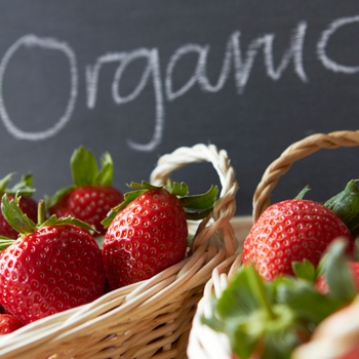
Dear Earth Talk:
I understand that, despite the popularity of organic foods, clothing and other products, organic agriculture is still only practiced on a tiny percentage of land worldwide. What’s getting in the way?
-- Larry McFarlane, Boston, MA
Organic production may still represent only a small fraction of agricultural sales in the U.S. and worldwide, but it as been growing rapidly over the last two decades. According to the latest global census of farming practices, the area of land certified as organic makes up less than one percent of global agricultural land—but it has grown more than threefold since 1999, with upwards of 37 million hectares of land worldwide now under organic cultivation. The Organic Trade Association forecasts steady growth of nine percent or more annually for organic agriculture in the foreseeable future.
But despite this growth, no one expects organic agriculture to top conventional tech- niques any time soon. The biggest hurdle for organics is the added cost of sustainable practices. “The cost of organic food is higher than that of conventional food because the organic price tag more closely reflects the true cost of growing the food,” reports the Organic Farming Research Foun-dation (OFRF). “The intensive management and labor used tion are frequently in organic produc- more expensive than (though not always) the chemicals routinely used on conventional farms.” evidence that if the However, there is indirect costs of conventional food pro-duction—such as the impact on public released into our air health of chemicals and water—were factored in, would cost the same non-organic foods or as much as organic foods. for organic foods Other problems perceptions about include changing just how much healthier they are than non-organics. organic foods pur-“Many devotees of chase them in order to avoid exposure to pesticides,” writes harmful levels of Henry I. Miller in Forbes. “But organic fruits and vegetables that’s a poor rationale: Non- had more pesticide residue, to be sure, but more than 99 percent of the time the levels were below the permissible, very by regulators—limits that are conservative safety limits set established by the Environmental Protection Agency and enforced by the Administration.”
perceptions about Changing just how much healthier organic foods are than are impacting the non-organic foods growth of the sector. But even if benefits of eating the personal health significant or clear, organic aren’t the environmental organic agriculture advantages of still make the practice well worth supporting.
Food and Drug He adds that just because a farm is organic doesn’t meanfree of potentially toxic ele-the food it produces will be ments. While organic standards may preclude the use of synthetic inputs, organic farms ral” pesticides and what Miller often utilize so-called “natu-calls “pathogen-laden animal also end up making consumers excreta as fertilizer” that can sick and have been linked to cancers and other serious illnesses (like their synthetic counterparts). Miller believes become aware of these prob that as more consumers lems, the percentage of the organics will begin to shrink. agriculture market taken up by Another challenge facing the organic sector is a shortage grain, sugar and livestock feed. of organic raw materials such as basics, organic farmers can’t Without a steady supply of these harvest enough products to Meanwhile, competition from make their businesses viable. food marketed as “locally ting into organic’s slice of the grown” or “natural” is also cutoverall agriculture pie. keep growing for years to come.
Organic agriculture is sure to And even if the health benefits cant, the environmental advan- of eating organic aren’t signifi- tages of organic agriculture— health advantages—make the which are, of course, also public practice well worth supporting.
